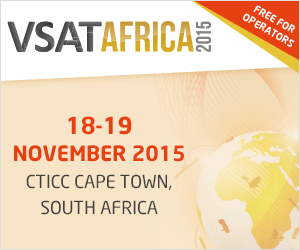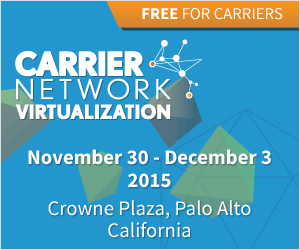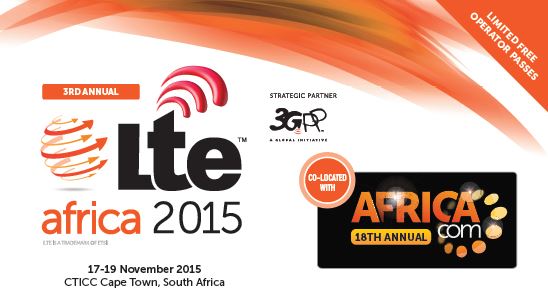Computaris International (www.computaris.com), a specialized provider of software development, telecom system integration and technical consultancy, has revealed a new brand identity. The rebranding reflects both the rich heritage of the company and its evolution, expressing the company’s commitment to quality and its unique proposition to customers. [Read more…]
Comprion Premiers New Testing Approach for Remote eSIM Provisioning at Mobile World Congress
Comprion has developed a new testing architecture for embedded UICCs (eUICCs), also known as eSIMs. The new methodology focusses on quality assurance, especially on interface compliancy as well as system and platform behavior testing according to the GSMA and GlobalPlatform. This approach will be introduced at the Mobile World Congress taking place in Barcelona, February 22-25. [Read more…]
Joint Comprion and Rohde & Schwarz Test Solution Allows Fully Automated Reconfiguration of USIM Profiles
Together with Comprion, the test and measurement expert Rohde & Schwarz has developed a solution for fully automated execution of both 3GPP TS 36.523 LTE and 3GPP TS 34.123 3G conformance tests. The solution consists of the R&S CMW500 protocol tester, providing an industry leading number of GCF and PTCRB validated protocol conformance test cases, and the Comprion Test SIM Simulator. [Read more…]
InfoVista Combines Subscriber QoS, Network Intelligence and Service Assurance for Advanced Mobile Network Optimization
InfoVista, the leading provider of network performance orchestration solutions for a better connected and collaborative world, today announced the latest version of VistaNEO, its automated RAN geolocation and optimization solution for unmatched subscriber quality of experience (QoE). This version offers new network optimization features such as group and individual subscriber quality of service (QoS) analysis together with superior geo-location intelligence. It enables mobile operators to protect revenue streams by maintaining enterprise customers’ and VIP subscribers’ QoE with advanced network optimization that combines subscriber intelligence, network intelligence and service assurance practices. [Read more…]
COMPRION and P3 Develop Mobile Payment Services Testing Solution
Mobile payment starts to revolutionize the way we pay. Regardless of already existing contactless communication standards such as NFC and EMVCo, the payment service providers and terminal vendors are still coping with teething problems resulting from the large number of smartphones, point-of-sale (POS) terminals, and technologies used. Test solution manufacturer COMPRION and test service provider P3 have teamed up to develop a dedicated test tool – the nano tracer – making sure that NFC based payment transactions can be monitored at the POS. [Read more…]
AsiaInfo Launches Cloud Core Carrier Grade BSS
AsiaInfo, the global BSS transformation specialist and China’s largest telecommunications IT software and services company, recently announced Veris Cloud Core – a complete cloud-based version of its award-winning Veris BSS software suite. [Read more…]
DIMOCO To Present Carrier Billing & Messaging Trends
From 22 to 25 February 2016 DIMOCO http://www.dimoco.eu presents carrier billing & mobile messaging trends at the Mobile World Congress in Barcelona. The carrier billing & mobile messaging provider shows brand new developments of the #1 digital payment method in reach and of the A2P (application-to-person) SMS area at a 126m² booth. [Read more…]
LogiSense Provides M2M Usage Rating and Billing for Ingenu
LogiSense Corporation, a leading global provider of usage rating, mediation and billing solutions to Machine-to-Machine and the Internet of Things (M2M/IoT), telecommunications, unified communications and enterprise service providers, announced that Ingenu has recently chosen LogiSense’s EngageIP Usage Rating and Billing Platform to help tackle the challenges of metering, monitoring and measuring its new and evolving technologies. [Read more…]
Monetising Big Data in Telecoms World Summit 2016
Monetising Big Data in Telecoms World Summit 2016
21-22 April 2016, Singapore
– Increasing ROI through developing an effective big data strategy for your business
Encompassing:
• Mastering the Challenges from Smart Data Analytics to Future Analytics
• Data-Driven Marketing
• Building Customer Trust in your Big Data Strategy
• Developing A Customer Data Mall to Benefit from External Monetisation
• Harnessing Big Data to Help Make Big Decisions
• Differentiated Experience
• Innovation for Success
• and many more!
[Read more…]
DIMOCO publishes carrier billing market report on Spain
DIMOCO – a leading European carrier billing provider http://www.dimoco.eu – scores with another market report. With 49m mobile subscribers, a 110.4% mobile (vs. 54.4% credit card) and a 54.5% smartphone penetration rate, Spain is one of the most highly developed mobile and carrier billing markets in Europe. (Juniper Research) With DIMOCO Carrier Billing, online merchants can bill their consumers via their mobile network operator invoice. According to PwC, the digital content market will grow from a revenue of 900m in 2015 to a revenue of 1.26m in 2019. [Read more…]
MDS Appoints New CEO
MDS, a leading provider of real-time charging, billing and customer management solutions, has today announced that Gary Bunney has been appointed CEO. Bunney will immediately focus on building on its already strong customer portfolio and driving the international expansion of the business. [Read more…]
DIMOCO Messaging becomes an independent, global, telecom carrier-grade A2P mobile messaging provider
Today DIMOCO nnounced the foundation of a new company. DIMOCO Messaging has become an independent, global, telecom carrier-grade A2P (Application-to-Person) mobile messaging provider with a mobile virtual network operator (MVNO) license, led by Matthias Höllerl as Managing Director. In addition to his role as the President of DIMOCO Germany, Martin Kolisch will take over all of Matthias Höller’s tasks & responsibilities as DIMOCO Europe’s SVP of Sales & Marketing. [Read more…]
VSAT Africa 18 -19 November 2015
We are happy to announce that this year we are a silver partner at VSAT Africa at CTICC in Cape Town on 18-19 November. Register online here.
As connectivity in Africa continues to advance, there are intensifying demands for large scale satellite deployments to support the influx of application driven services. In partnership with Orange Business Services, the 2nd annual VSAT Africa show welcomes industry disrupters and end users, such as Facebook, BT, Afrique Telecom, Airtel Ghana, SPARC and SOS Children’s Village, to discuss the latest services and applications being expanded through satellite in Africa.
Free End User passes available – click here to register now.
Key leading speakers include:
Ryan Wallace, Connectivity Deployments, Facebook
Mark McCallum, CTO & Head of Global Services Africa, Orange
Maxwell Dodd, VP & Enterprise Director, Airtel Ghana
Renato Goodfellow, Head of Global Satellite, BT Global Services
Ton Ebbenhorst, Head of Satellite, Orange Business, Orange Business Services
Abdul Bakhrani, Founder & Chief Promoter, SPARC
Maria Berenguer, Information and Communication Technology, SOS Children’s Villages
For the full agenda and speaker line up click here >>
3 EASY WAYS TO REGISTER:
Secure your place online here
Call: + 44 (0) 20 7017 5506
Email: [email protected]
ARE YOU AN END USER? LIMITED FREE PASSES* available by clicking here
As connectivity in Africa continues to advance, there are intensifying demands for large scale satellite deployments to support the influx of application driven services. In partnership with Orange Business Services, the 2nd annual VSAT Africa show welcomes industry disrupters and end users, such as Facebook, BT, Afrique Telecom, Airtel Ghana, SPARC and SOS Children’s Village, to discuss the latest services and applications being expanded through satellite in Africa.
We look forward to welcoming you as our guest next month.
Carrier Network Virtualization November 30 – December 3 2015 | Crowne Plaza Palo Alto, USA
Carrier Network Virtualization
November 30 – December 3 2015 | Crowne Plaza Palo Alto, USA
www.carriernetworkvirtualization.com
The 3rd annual Carrier Network Virtualization event will once again unite the carrier community in California, the heartland of SDN and NFV solutions. The show will be packed with case studies discussing Carrier Class SDN from a unique carrier led perspective.
Brought to you by the producers of the acclaimed Network Virtualization & SDN World show in London, this event examines the steps needed to move SDN and NFV forward from research into reality, featuring dedicated tracks and keynotes on Network Functions Virtualization, SDN, Openness and Collaboration and Monetization and Quality Assurance.
Featuring new case studies from pioneers at the forefront of Software-Defined Networks and Network Functions Virtualization advancements, this event examines the steps needed to be taken to move Carrier SDN forward from research into reality, including a wide range of in-depth carrier perspectives from across the world.
LTE Africa 2015: 17 – 19 November Cape Town, South Africa CTICC
With less than two weeks to go, OSS News Review wants to remind you about your discounted pass* for the upcoming LTE Africa event.
*PLUS, if you represent a regional operator you can attend the event free of charge. You can do so by registering here.
Join us at the industry’s meeting point to discuss the present and future of cellular networks in the region, on 17-19 November in Dallas, Texas.
Download your copy of the brochure now to see the full agenda, speaker line up and all the interactive features on offer at the show.
*To claim your 20% discount, simply enter I8MSY/Oss when you register.
Hope to see you there!
Kind regards,

Managed Services World Congress 24 – 25 November 2015 | Montfleury Hotel, Cannes
Managed Services World Congress Event Profile
24 – 25 November 2015 | Montfleury Hotel, Cannes
www.managedservices-world.com
Managed Services World Congress is the only global congress for telco managed services which will include relevant topics for transformation and next generation managed services for network planning, customer operations, consolidation, virtualisation and beyond. Managed Services has a long and successful event history, this being the 9th annual congress, attended each year by 250+ managed services experts. This year’s MSWC new scenery and refreshed programme, designed after in-depth research with 50+ MS experts including the Advisory Board committee, is not to be missed by any expert in the industry who is serious about opportunities and latest technologies for telco outsourcing and MS partnerships.
Carrier Network Virtualization November 30 – December 3 2015 | Crowne Plaza Palo Alto, USA
The 3rd annual Carrier Network Virtualization event will once again unite the carrier community in California, the heartland of SDN and NFV solutions. The show will be packed with case studies discussing Carrier Class SDN from a unique carrier led perspective. [Read more…]
LTE Africa 2015: Accelerating the Growth of Africa’s 4G LTE Future
2015 has been an exciting year for Africa, with LTE 4G services now provided in 24 African countries, and many more operators expected to launch commercial 4G LTE services by the end of the year. As LTE subscriptions in Africa continue to grow, and with 50% of the region’s population expected to be covered by LTE networks by 2018, LTE Africa 2015 (17-19 November) will return at a time when it has never been more crucial for operators to ensure they have the best plans for the future strategic deployment of LTE networks. [Read more…]
LTE Africa 2015: Receive a Free Pass or 20% Discount from OSS News Review
OSS News Review is delighted to be able to offer you one of our discounted guest passes for the forthcoming LTE Africa 2015 event, taking place on November 17-19 at the Cape Town Convention Centre. [Read more…]
Centina Systems Launches vSure™ to Operationalize NFV and SDN
Centina Systems, the innovation leader in service assurance solutions, announced the launch of their vSure™ product, aimed at helping service providers to successfully transition and operationalize their networks and services from legacy environments to virtual environments. vSure™ complements orchestration by providing closed-loop feedback through a suite of tools and analytics to enable the providers to manage and visualize NFV and SDN environments from end-to-end and top-to-bottom. [Read more…]
- « Previous Page
- 1
- …
- 9
- 10
- 11
- 12
- 13
- …
- 56
- Next Page »






